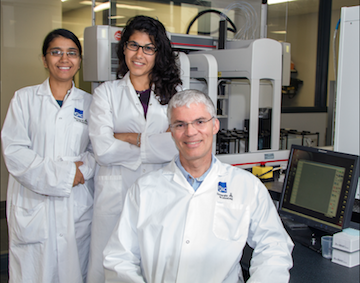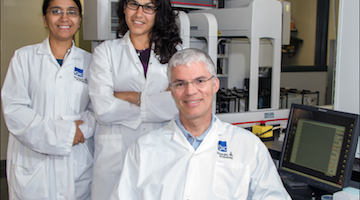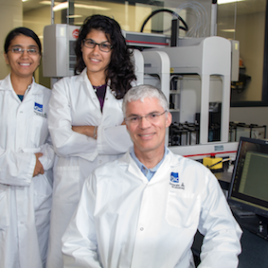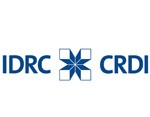
Jalila Chagraoui, Research Officer, Iman Farès, Ph.D. Student and Dr. Guy Sauvageau, Principal Investigator at Institute of Research in Immunology and Cancer (IRIC). (Photo credit: IRIC)
Researchers have identified a molecule that causes the stem cells found in cord blood to multiply into more stem cells.
Umbilical cord blood can be used to treat genetic and blood cell formation disorders, including leukemia, but the small number of blood stem cells in this kind of blood limits its widespread use.
Researchers have now identified a family of molecules that can make the human cord blood cells in the lab capable of reconstituting the formation of blood cells for at least 6 months in immunocompromised mice. A clinical study using this molecule, named UM171 in honour of the Université de Montréal, and a new type of bioreactor developed for stem culture in collaboration with the University of Toronto will start in December 2014 at the Maisonneuve-Rosemont Hospital in Montreal.
The original research paper was published in the journal Science on September 18, 2014, and is available upon request.
Names and affiliations of selected authors
Guy Sauvageau, Institute of Research in Immunology and Cancer (IRIC), University of Montreal, Quebec



